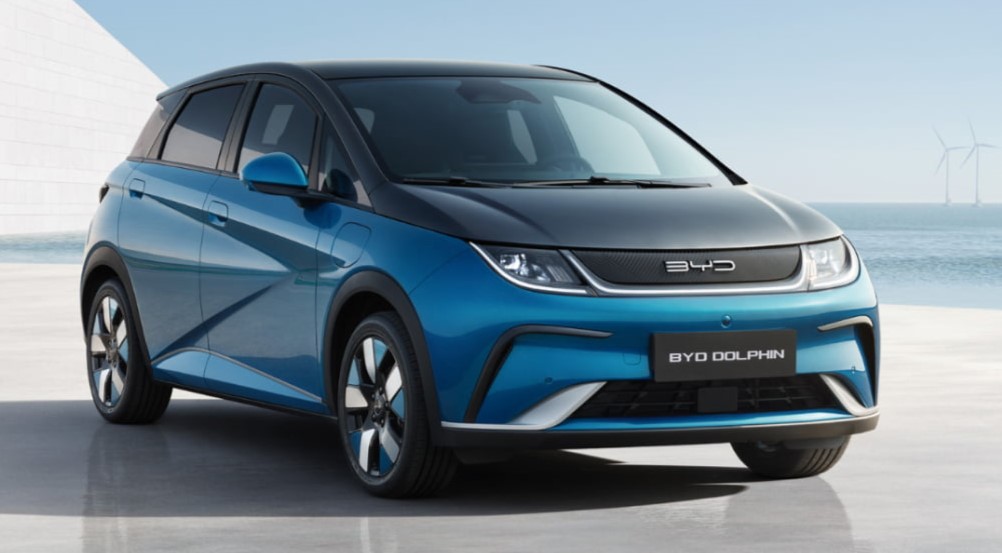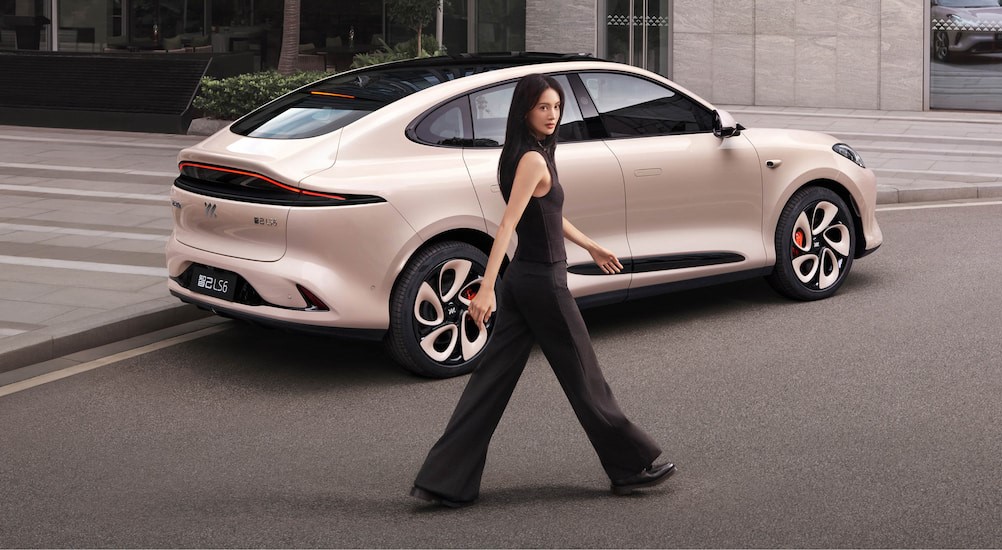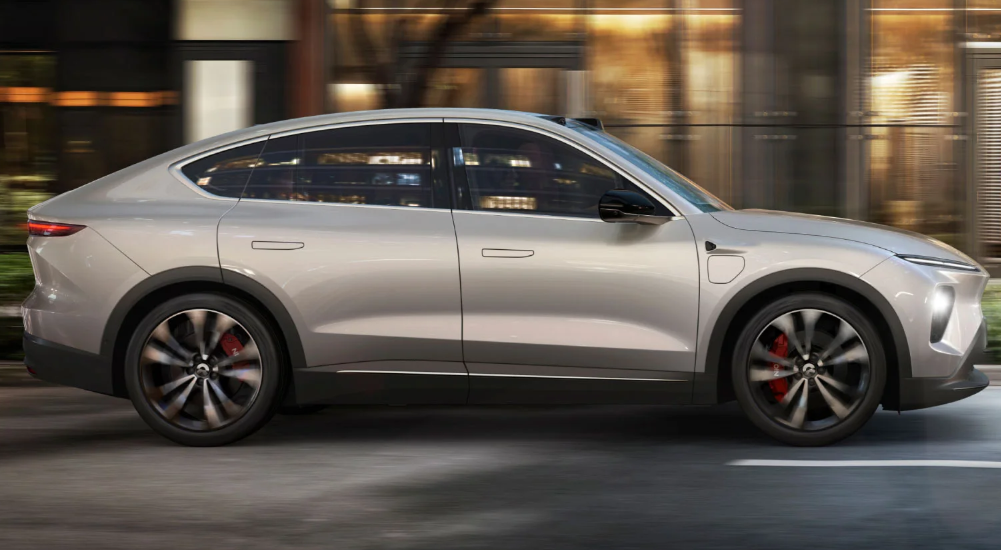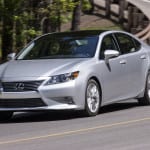For years, there has been speculation on when Chinese automakers will finally bring their vehicles to American soil en masse. They are already making huge inroads elsewhere—the China Passenger Car Association (CPCA) reports the nation exported more than five million vehicles in 2023. This would make China the world’s largest vehicle exporter, surpassing longtime leader Japan.
A huge EV industry, improving quality, and a lack of competition in certain countries have contributed to the rise. Some manufacturers, like Stellantis, have even admitted to modifying their EV strategies based on Chinese success. Despite this, China continues to largely be shut out of the American market. We are starting to see Chinese cars here, but they are all from established brands that have recently been bought out by China. For instance, Volvo, Lotus, and Polestar are now owned by the Chinese automotive giant Geely. However, brands that started in China have been unable to crack the code.
Is the day coming, though, when more Chinese models will be available to American customers? If so, which brands and models are the most likely candidates? In this analysis, we attempt to answer those questions while looking at the obstacles standing in their way.
Notable Chinese Vehicle Brands
With dozens of state-owned and independent automotive brands based in China, there is certainly no shortage of potential future options for American buyers. Some are more serious contenders than others, though. Here are three Chinese auto manufacturers we think are most likely to ultimately come to the United States based on factors such as their size, partnerships, and current expansion plans. We’ve also taken a few expert guesses about what vehicle models could be part of such a move.
BYD Auto
Let’s start with the company that is now the best-selling independent automotive brand in China. BYD Company, which stands for Build Your Dreams, sold 2.4 million vehicles to China residents in 2023. That put an end to Volkswagen’s 15-year run as the best-selling brand in China. BYD is also now the world’s biggest seller of plug-in EVs, having surpassed even the mighty Tesla.
Furthermore, BYD already has a North American presence. In 2014, BYD opened a manufacturing plant in Lancaster, California, that builds battery electric buses and trucks; it’s now the largest such manufacturer in North America. This is part of a global infrastructure that spans six continents, giving the brand the capacity to get American vehicle production up and running quickly.
As for which vehicles might lead the charge, the BYD Dolphin that came to Mexico in September 2023 is certainly a possibility. However, we’ll go with the only car listed on the BYD USA website: the BYD HAN. Advertised as a performance luxury EV, this sedan has many features American drivers are likely to be looking for, including a 0-60 mph time of 3.9 seconds and an estimated range of 375 miles. With the worldwide luxury vehicle market expected to top $2.55 trillion by 2030, it would be a case of supply meeting demand.
SAIC Motor
Next up, we have the largest automotive brand based in China. The state-owned SAIC Motor Corporation sold more than five million vehicles in 2023. A big advantage of SAIC is its partnerships with General Motors (SAIC-GM) and Volkswagen (SAIC Volkswagen), which allow it to manufacture certain makes and models. Along with vehicles familiar to Americans, like the Chevy Blazer, SAIC-GM produces many China-exclusive models, such as the Buick Velite and Cadillac GT4. You might be surprised to learn that the Buick Envision we get here in America is actually manufactured by SAIC-GM in China.
Having these established relationships would theoretically make it much easier to bring SAIC models to American shores. It has many brands to choose from, including Roewe and Maxus. If we had to pick, though, we would go with the small but growing IM Motors, a relatively new luxury EV brand. This brand sold just over 38,000 vehicles in 2023, led by the high-end LS6 electric SUV. This would be the perfect model for dipping a toe into American waters.
NIO
Finally, we have NIO, a Chinese EV brand that released its first vehicle in 2016. Although the first two brands we’ve mentioned involve some speculation, NIO has been quite vocal about its plans to eventually enter the American market. In September 2023, it officially opened its North American headquarters in San Jose, California. As recently as November 2023, NIO US CEO Ganesh Iyer said his goal was to be selling cars in the United States by 2025, importing models manufactured in China. Shortly afterward, though, Iyer sounded more uncertain of this timeline and said he was open to partnerships that could help make the transition to North America easier.
Regardless, it seems like a good potential match. The brand’s focus is on premium electric vehicles, which we’ve already mentioned is a massive market. The company is growing rapidly—its sales increased more than 30% in 2023—yet it’s small and new enough not to be universally thought of as a “Chinese brand.” And it has an intriguing vehicle lineup that includes the ET5 midsize sedan and EC7 SUV coupe.
One thing to consider, though: NIO is hemorrhaging money. A New York Times report said the brand could be losing as much as $35,000 per car thanks in part to an EV price war. This would put it in a similar position to American luxury EV brands like Lucid and Rivian. On multiple occasions, NIO has needed large loans and outside investments to stay afloat. Any plans to come to America may well depend on the company’s financial health.
Potential Obstacles for Chinese Auto Manufacturers
Now that we’ve discussed the most likely Chinese automotive makers to come to the United States, we need to look at why they haven’t already. Though specifics certainly vary from company to company, there are two main factors stemming the tide.
#1 – Import Tariffs and Tax Incentives
The first and most obvious hurdle is the ongoing trade wars between the United States and China. The Trump administration imposed an additional 25% tariff on imported Chinese vehicles on top of the existing 2.5%, bringing the total to 27.5%—which the Biden administration has kept in place. Several politicians have recently proposed increasing these tariffs even further, with suggestions of 100% tariffs being floated. Needless to say, this would make it impossible for Chinese manufacturers to compete in the American market.
The obvious workaround is for Chinese automakers to set up manufacturing plants in other countries. BYD is among those doing so, announcing in December 2023 its plans for an EV manufacturing facility in Hungary. Even so, it wouldn’t surprise us if the American government finds additional deterrents. The resistance to Chinese companies was seen in late 2021 when BYD was excluded from federal transit funding despite its electric buses being manufactured in the United States.
On a related note, the Inflation Reduction Act of 2022 included an EV tax credit of up to $7,500 per vehicle—but only if the vehicle is made in North America. While one strength for Chinese vehicles has been undercutting the competition on price, not benefitting from these credits will make it more difficult to do so.
#2 – Creating a Dealer Network
Even if a Chinese automotive company can overcome the first obstacle, there remains something more: finding dealers willing to sell their cars. Existing automakers in the United States have spent decades establishing dealer networks. Chinese manufacturers—except for possibly SAIC Motor, thanks to its GM and Volkswagen connections—are going to be starting this process from scratch.
This certainly can be done over time, as we previously saw with the Japanese influx of Toyota, Honda, Subaru, and other brands. It would take a lot of patience and long-term thinking, though. The other option would be to do what NIO appears to be doing and try to partner with an established manufacturer, thus giving them access to existing distribution channels. There is also the potential for Tesla-style direct sales, although that has its own share of pitfalls.
A Matter of When, Not If
There have already been times when it looked like a Chinese automaker was going to make a serious play for the American market, only for plans to fizzle out. We remember GAC Motor announcing in 2019 that it would start importing the GS8 Sedan within the year, and we have yet to see it on American streets. The same goes for the Lynk & Co 01 from Geely, which has been rumored for American-market sales since at least 2018 but still has not come to fruition. Because of the various stumbling blocks, it’s hard to pinpoint exactly when the influx of Chinese auto brands will begin. We do think the influx is coming, though, and we’ll be keeping a close eye as we try to separate rumor from reality.






